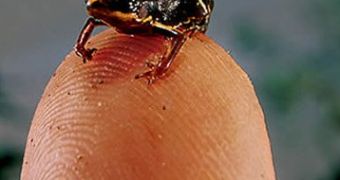Caribbean islands have sunshine and picturesque views. But they are in the end relatively isolated ones, with a rich fauna of frogs.
DNA researches showed that at least 29 million years ago, South American frogs jumped on some kind of natural rafts, which carried them on until reaching either Central America or the Caribbean islands, where they bloomed, forming new frog populations.
The evolutionary history of tiny frogs named coqui frogs (from the genus Eleutherodactylus, which represents about one third of the amphibians of Americas), which can be as tiny as 8 mm long (the smallest amphibians) has remained largely unknown.
Researchers had previously thought that these frogs originated in South America and then traveled into Central America and the Caribbean via land bridges that had existed before breaking away about 80 million years ago (during dinosaur era).
To see if this hypothesis is real and how the coqui frogs are evolutionarily related to each other, a team led by S. Blair Hedges, an evolutionary biologist at Pennsylvania State University, gathered information on 277 different species of Eleutherdactlynae frogs from South America, Central America and Carribean and compared their DNA sequences. But the DNA analysis revealed that, opposite to the common conception, these South American frogs didn't walk to their new colonized territories of Central America and Carribean.
Instead, they made the journey in the lower Tertiary (between 29 and 47 million years ago), when mammals ruled the world, much after the land bridges disappeared, which means they had to pass the sea water by floating on a raft like a piece of wood from a tree.
When the coqui frogs reached the new territories, they evolved very distinctly from their South American ancestors, thus the migration occurred just once, without further colonizations after the mass exodus took place millions of years ago.

 14 DAY TRIAL //
14 DAY TRIAL //